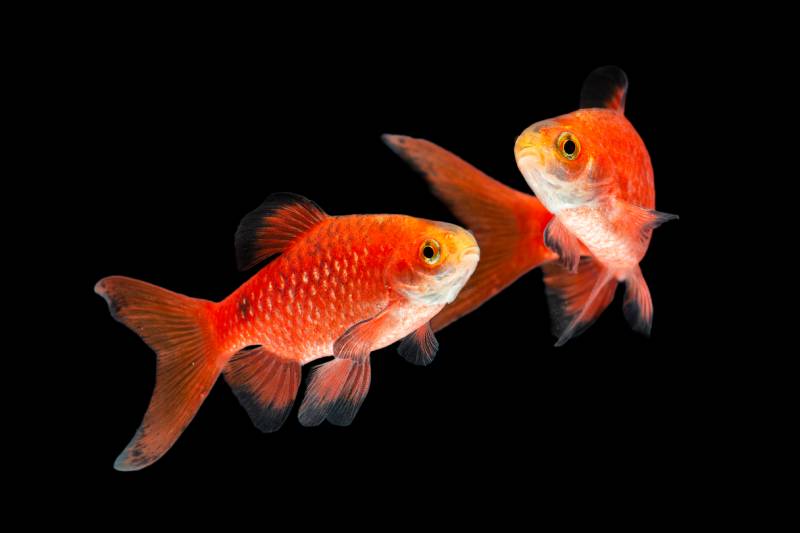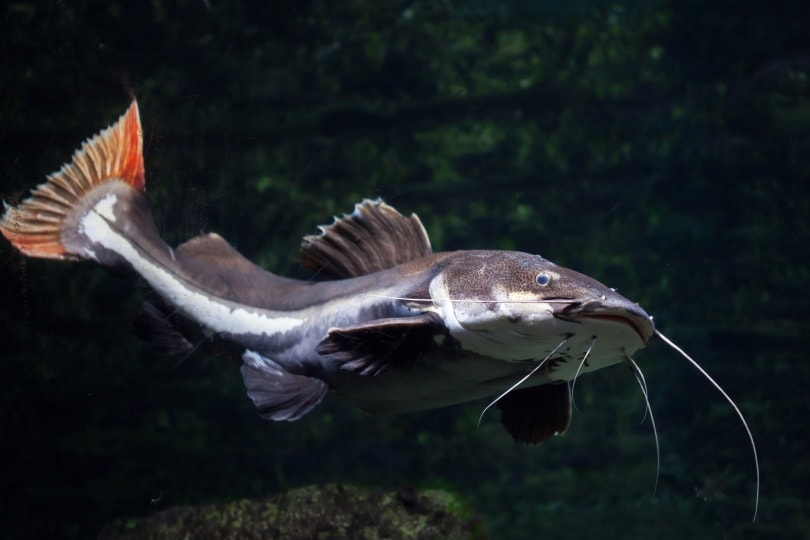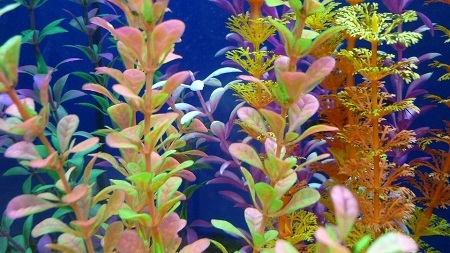5 Types of Cichlids That Can Live Together (With Pictures)
Updated on
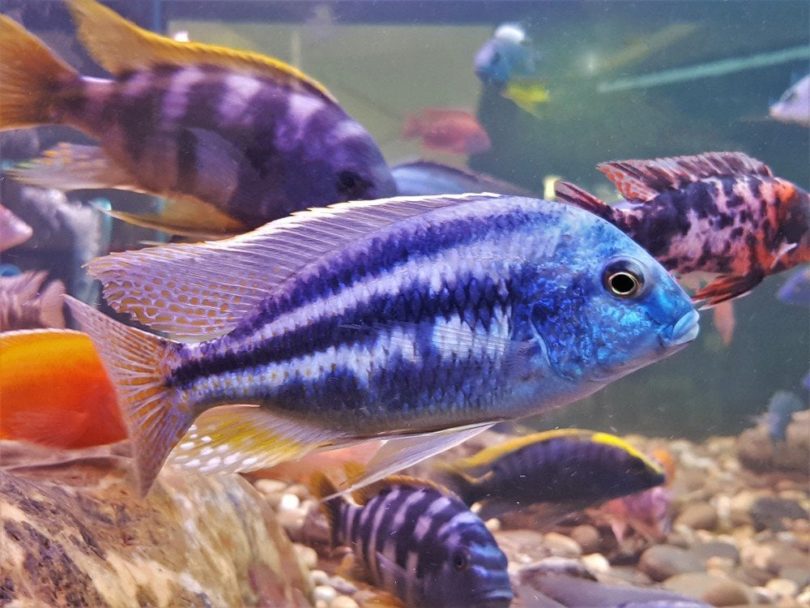
Cichlids have a reputation for being aggressive and territorial which leads many aquarists to believe that cichlids cannot live with each other. Cichlids are obligate carnivores that come in a variety of shapes and colors. They have a prominent personality that can be seen by regular interaction, and their natural temperament is generally considered unfriendly.
Males are known to fight to defend their territory, food, and potential mates. This discourages people from keeping different cichlids together. Luckily, some types of cichlids can live together with no problems. However, it is not a guarantee that no fighting will occur, as minor disagreements and chasing are common amongst this species.
Keep in mind that cichlids are not good community fish and should preferably be kept in species-specific tanks.
The 5 Types of Cichlids That Can Live Together:
1. Mbuna
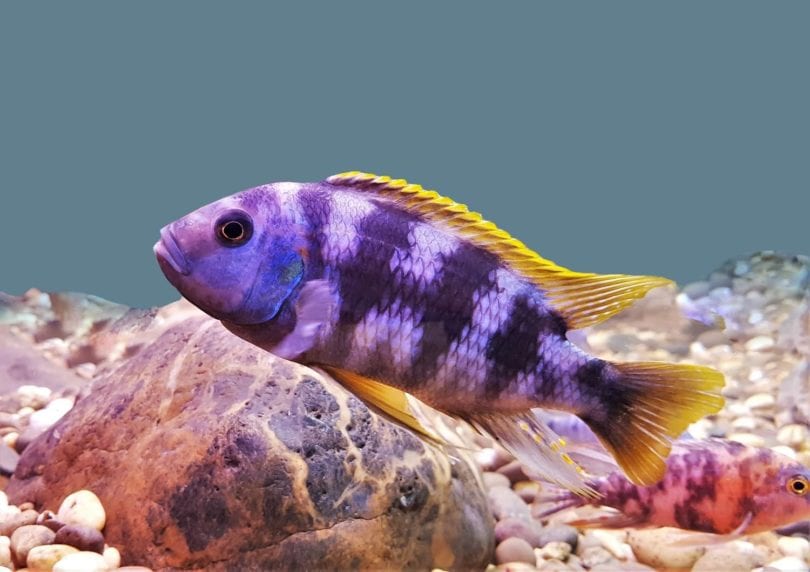
These cichlids can be housed together in groups. They are colorful and are known as one of the best species of cichlid to keep together. If they are kept in large enough groups, then their aggressiveness can remain controlled. Mbuna cichlids do best with peacock cichlids because they are both found in lake Malawi on the east coast of Africa. This means it is not uncommon for these two species to run into each other in the wild and they have adapted to deal with each other. Mbuna cichlids can be kept in large groups of 6 or more. Small groups are not recommended because this allows them to easily pick out a target and harass them. Never house Mbuna cichlids with haps as they are not a good mix and will constantly fight.
2. Malawi
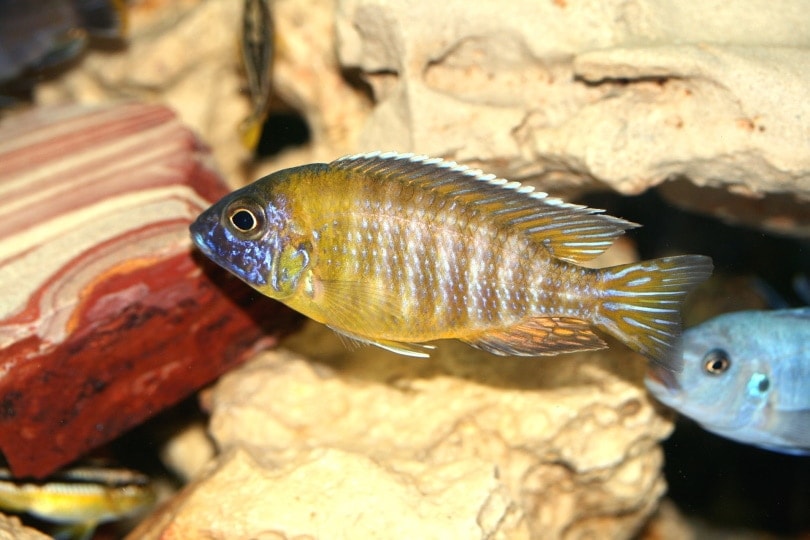
Malawi mixed cichlids are on the smaller side and come in many different colors. They are best kept in large tanks where they have enough space to get away from one another. They do not have to be kept in large groups and can do fine as a trio. As they get older, you may notice that they become more aggressive, and then you should introduce a few more into the tank.
3. Blood Parrots
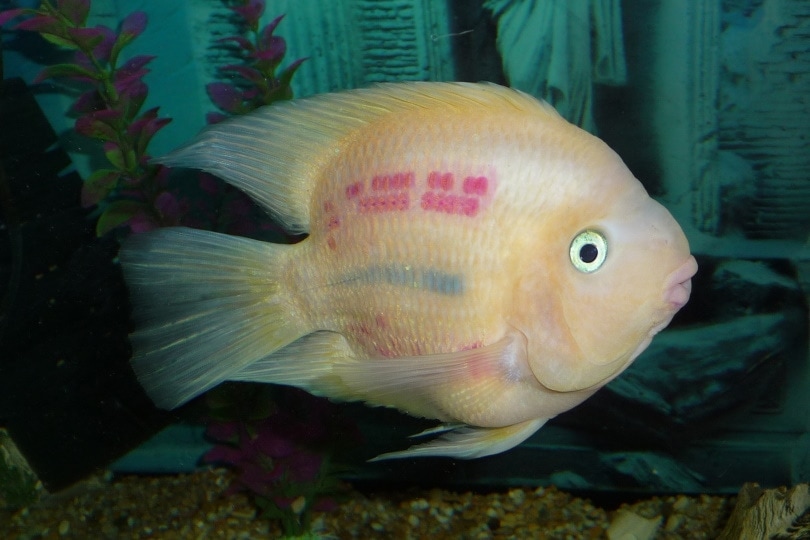
This is a man-made species of cichlid. They are one of the most territorial cichlids you can keep. They will make nests in the substrate of the tank and will guard it profusely even if there are no eggs inside. They chase other fish who come near but will rarely nip at the bullied fish. They can get along in a male and female pair, or a pair of 4 or more females.
Related: 5 Best Foods For Blood Parrot Fish
4. Tanganyika

These cichlids can get along well in groups and can be housed with Mbuna cichlids. They are colorful and rarer than many other types of cichlids. The temperature and conditions are extremely important if you are trying to keep them content with one another.
5. Dwarf cichlids

One of the friendlier cichlids in the aquarium trade are dwarf cichlids. They can get along in groups of 5 or more and can be kept with blue rams, Tanganyika, and Malawi cichlids. They do not get very big and come in several different color options.
How to Successfully Keep Cichlids Together
- Provide them with a large tank. The minimum size for a small group of cichlids is 55 gallons. The larger the species and more you want to keep together means that you should add on an additional 10 gallons to the recommended minimum. The larger the tank, the higher the success rate will be. Small, cramped tanks will cause the cichlids to become stressed and fight with one another.
- Ensure that there are plenty of hiding spaces in the form of rocky caves and live plants.
- Always run a large air stone in the tank. This helps increase the amount of dissolved oxygen and causes surface movement for proper gas exchange.
- A strong filter should be placed inside the tank. Cichlids produce a high bioload that can cause the water to quickly become toxic.
- Make sure that you spread the food out during feeding time. This helps stop your cichlids from fighting over food availability.
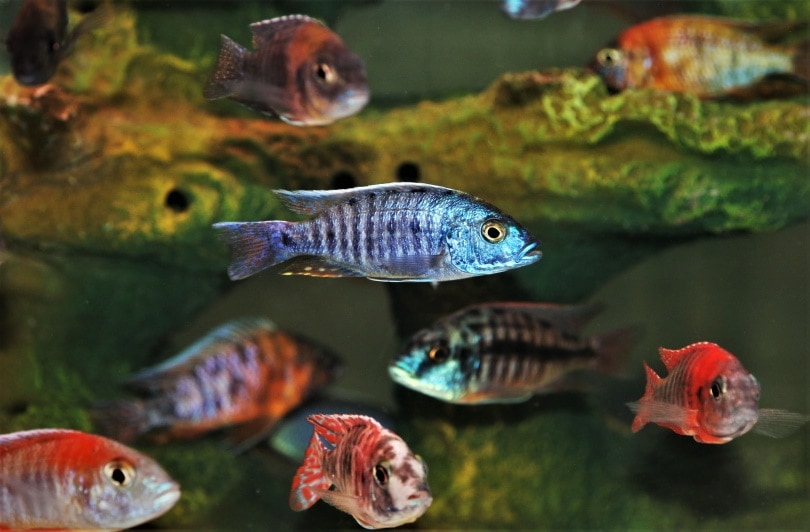
When to Separate
If you notice constant fighting, chasing, and fin nipping even if you have provided them with the right conditions, it is important to separate them right away. If your cichlids are in a constant state of stress, they are prone to developing a variety of illnesses. It is also common for the bullies to chase other cichlids out of the tank, even if there is a top lid.
Keeping African Cichlids Together
They are several different types of African cichlids. Most are from Lake Malawi which hosts over 700 species of cichlids. African cichlids prefer hard aquarium water with an alkaline pH. They are tropical fish that need a heater and a temperature between 70°F to 80°F. The tank layout should ideally be filled with lots of different rocks and caves to mimic their natural environment. Aulonocara cichlid species should not be kept together because of their aggressiveness, but they can be kept with Mbuna cichlids if the conditions are right.
Keeping Dwarf Cichlids Together
Dwarf cichlids come from different areas, but they require the same water conditions. Most of the dwarf species are from South America and inhabit tropical waters. This includes blue rams, Apistos, rainbow Kribs, and Bolivian rams. These species can be housed together with few problems and are much less aggressive. They should have plenty of driftwood and live plants in their environment. They should not be housed under bright lights, and they do best in tannin-rich waters created by driftwood, cholla wood, or Indian almond leaves.
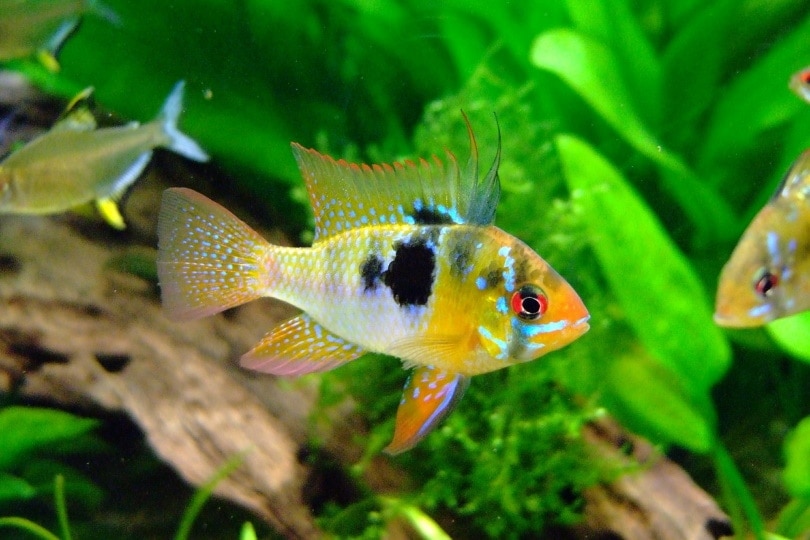
South American River Cichlids
This species of cichlid is barely aggressive, and they can be kept together in large groups. They prefer soft water and a pH between 6 to 7.5. They are more sensitive to water conditions and can become stressed if the tank is not large enough. The pH and temperature should be carefully monitored, and regular water changes should be conducted to keep toxins at a minimum.
Final Thoughts
If you keep cichlids in the right conditions and with the appropriate species, then they can successfully be kept together. Most cichlids will not show aggression if they are in a large enough tank that has lots of coverage and hardscape. Cichlids are beautiful fish that can look great together.
We hope this article has helped you find the best mix of cichlids to keep together!
See also:
- African Cichlid Breeding Guide: Vet-Approved Steps & Tips
- 7 Best Substrates For Cichlids: Reviews & Top Picks
Featured Image Credit: Arunee Rodloy, Shutterstock

